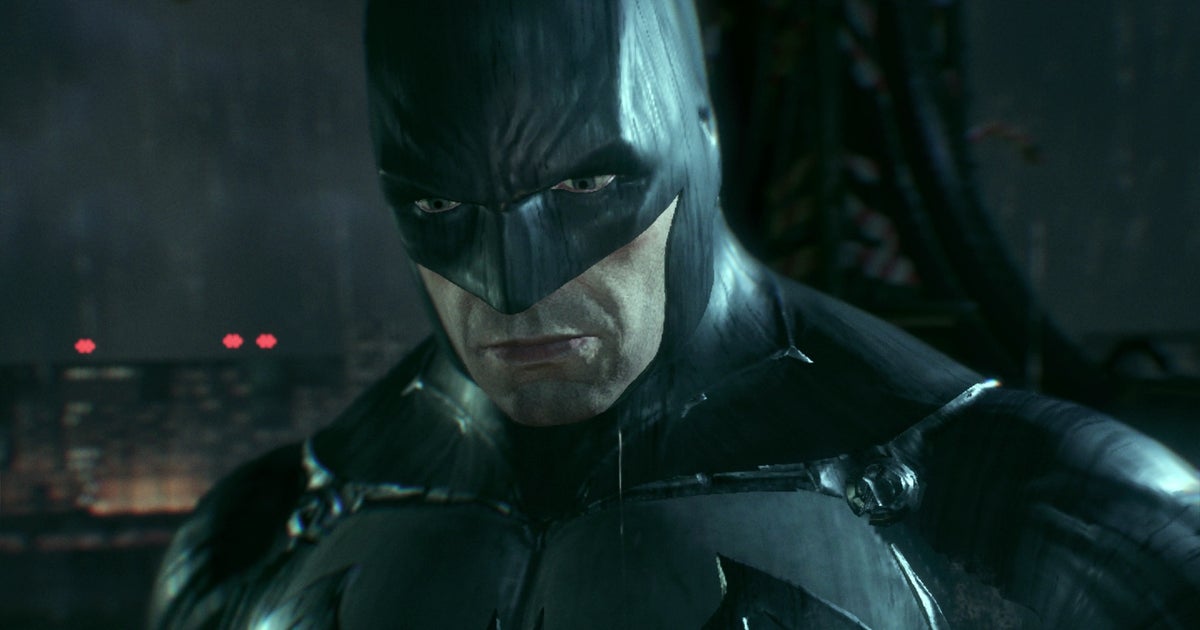This week’s DF Direct Weekly kicks off with our ‘hot take’ on the state of Batman: Arkham Trilogy on Nintendo Switch. We film the show on Friday morning and so only had an hour or so with the game before we sat down to record, but we had to know the answer to one burning question: can Nintendo’s handheld hybrid really run Batman: Arkham Knight? Hopes were high for another ‘impossible port’ but alas, the final game is practically a disaster, brutally cutback in every conceivable way and plagued with profound stuttering problems.
Lighting is savagely downgraded, texture quality is a total mess, shadows take a trip back to PS2 era standards and geometry is culled. Arkham Knight routinely fails to hit its 30 frames per second target, often lingering in the low to mid-20s but worse than that is the pervasive stuttering problem. Most strongly evident in the Batmobile sections, Arkham Knight is clearly facing system-level bottlenecks at every turn: streaming environmental detail at speeds has a clearly measurable impact on the CPU, while the addition of collision physics stacks on top of that, taking performance into the teens.
We’ve got a deeper tech review coming soon, but ultimately, this collection should never have shipped. The quality of the porting is suspect in a world where Arkham Asylum drops frames under 30fps and where the more technologically demanding Arkham City actually seems to run better on aggregate – though of course, there are the predictable struggles in denser city scenes. There’s the sense that the first two games in the trilogy required more optimisation work while the entire Arkham Knight endeavour should have been canned, perhaps in favour of an adaptation of the often-overlooked Arkham Origins… or else the entire project put on pause until Switch’s successor finally arrives. All being well, we’re looking to deliver our full review for the Arkham Trilogy tomorrow, but having reviewed first drafts of video and text, the news doesn’t get any better – in fact, it gets a lot worse.
- 0:00:00 Introduction
- 0:01:03 News 01: Arkham Knight on Switch is a disaster
- 0:15:46 News 02: Larian boosts Baldur’s Gate 3 performance
- 0:26:06 News 03: The Orange Box unlocked to run at 60fps on Xbox Series consoles
- 0:37:56 News 04: Dragon’s Dogma 2 trailer released
- 0:49:05 News 05: Cheat codes discovered for Gran Turismo PSP
- 0:58:39 News 06: John’s VR odyssey continues!
- 1:09:25 News 07: Duke Nukem games released for Evercade
- 1:17:17 Supporter Q1: To play an older 360 game, is the best option original hardware plus a RetroTink, or a Series X?
- 1:22:38 Supporter Q2: Have PC GPUs fallen behind in performance scaling relative to consoles over this generation?
- 1:28:28 Supporter Q3: Why do some UE5 titles skip over hardware Lumen, even on PC?
- 1:32:30 Supporter Q4: Could Sony improve the PS Portal with software updates?
- 1:41:29 Supporter Q5: Could frame generation be used to improve motion blur?
There’s better news elsewhere in this week’s DF Direct Weekly as Alex spent some time getting to grips with the fifth patch for Baldur’s Gate 3 – and of course, our first port of call would be Act Three, set within the city of Baldur’s Gate itself. Larian has discussed a strong optimisation push, some of it dictated by the need to get the game working on Xbox Series S, but the bottom line is that our mainstream CPU champion – the Ryzen 5 3600 gains around 22 percent in performance compared to our launch metrics. Frame-time consistency is improved too, seemingly down to optimisation of the earthquake systems that caused real issues on the launch game – though this may have been fixed before patch five, of course. While the game is still some way off 60 frames per second, what this does mean is that less strenuous content is now more likely to hit the target, while more capable CPUs are also likely to see a boost, and again, 60fps locked may be more attainable.
Speaking of 60fps, we’re extremely late to the party with this, but this video from ReveriePass from last year recently resurfaced on X/Twitter via f4micom and it’s fascinating. Essentially, config files that define the frame-rate limit of all the titles in the Xbox 360 version of The Orange Box can be extracted on PC, tweaked, re-inserted into the config file and uploaded to the cloud via an OG 360. Xbox’s seriously cool feature of cross-generation cloud synchronisation then brings that hacked config onto Xbox Series consoles. Xbox 360 lacks the horsepower to run any of The Orange Box’s games at 60fps – in fact, a double-buffer v-sync sees performance jump between 30fps and 60fps randomly – but Series consoles can get the job done.
There are caveats and problems, but the fact is that it is viable to play through those games at the ‘right’ frame-rate, which raises the question: how many more games could benefit from this software approach to FPS Boost? The Orange Box benefits on two fronts: they are X-enhanced titles already, meaning Series S runs at 1440p and Series X at 4K. This ‘hack’ removes the poorly implemented 30fps cap and makes the games run as they should – and it’s so simple, surely Microsoft and Valve could produce an official solution. We already have one example of this: FPS Boost is typically accomplished with DirectX-level tweakery, but Dark Souls 3‘s frame-rate unlock was seemingly a software-based solution. We’ll be taking a closer look at The Orange Box this week, including tests on Xbox One consoles and Series S.

And sticking with the topic of Xbox 360, there’s a great supporter question in this week’s Direct about the best way to play 360 titles – should users tap into Series X for the performance boosts while outputting to a modern flat panel display, or should the most committed fans buy a RetroTink 4K and use the nearest neighbour upscaling to run the 720p (or indeed 1080p on selected titles) at 4K? It’s a difficult question. Series X doesn’t run every Xbox 360 game and it uses its own, less than impressive scaling to run 720p content at ultra HD. Seriously, nearest neighbour upscaling looks so much better.
The problem is that the Xbox 360 era is one of the worst performing of any console generation – and Xbox back compat makes a big, big difference. John’s solution for the ultra-elite, money-no-object user? Set your Xbox Series X to 720p and then use the RetroTink for nearest neighbour upscaling! It’s an extreme solution to say the least, but maybe a simpler solution would be a nice new scaling option for Series users from Microsoft. That’s just one of the fun, interesting ideas offered up by supporters this week, which makes DF Direct Weekly’s supporter Q+A section so interesting.
Also intriguing: will today’s console-equivalent PC parts eventually get out-performed by PS5 and Series X? The answer is definitely yes, but we’re putting the methodology into place to keep track of where CPU and GPU lies. Look out for that later this month or early next year!
function appendFacebookPixels() { if (window.facebookPixelsDone) return; !function(f,b,e,v,n,t,s) {if(f.fbq)return;n=f.fbq=function(){n.callMethod? n.callMethod.apply(n,arguments):n.queue.push(arguments)}; if(!f._fbq)f._fbq=n;n.push=n;n.loaded=!0;n.version='2.0'; n.queue=[];t=b.createElement(e);t.async=!0; t.src=v;s=b.getElementsByTagName(e)[0]; s.parentNode.insertBefore(t,s)}(window, document,'script', 'https://connect.facebook.net/en_US/fbevents.js');
fbq('init', '560747571485047');
fbq('track', 'PageView'); window.facebookPixelsDone = true;
window.dispatchEvent(new Event('BrockmanFacebookPixelsEnabled')); }
window.addEventListener('BrockmanTargetingCookiesAllowed', appendFacebookPixels);
Source link












Leave a Reply